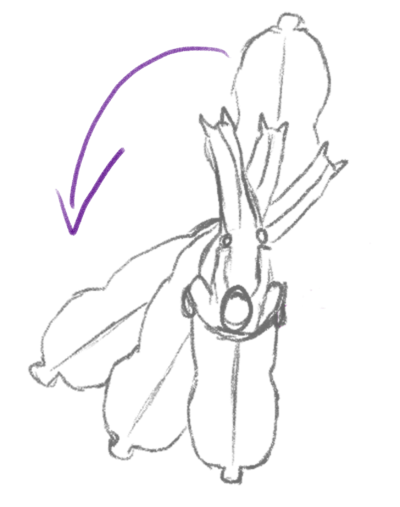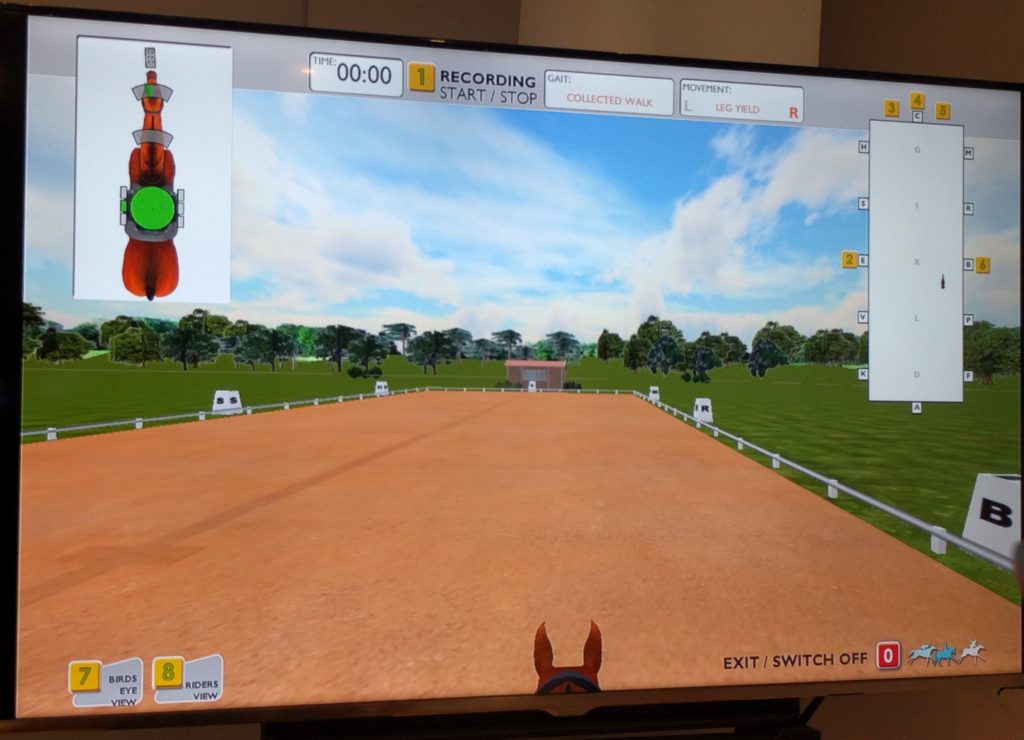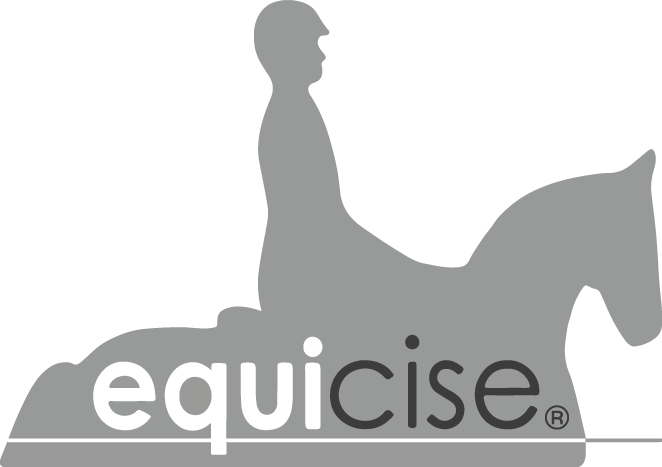05 Jun 15. Turn on/about the forehand

We have already discussed leg yield and shoulder in (Articles 13 and 14 respectively), but turn on the forehand is another sideways exercise that helps to introduce a horse (and rider) to lateral movements. Turn on the forehand requires the horse to move its hindquarters around its front legs as it executes a 180-degree turn, starting and ending in halt. As turn on the forehand requires the horse to cross and uncross its hind legs, it helps increase the suppleness in the hindquarters by stretching and flexing all the relevant muscles, ligaments, tendons and joints. It is therefore a useful strengthening exercise for the hindquarters and good preparation for future lateral and collection work.
According to Advanced Techniques of Riding (The Official Instruction Handbook of the German National Equestrian Federation), the turn on the forehand was developed by the Duke of Newcastle in the 17th century, and was described as (among other benefits) being “the foundation of all other lateral movements”. While this movement is more frequently practised from halt, turn about the forehand (from walk) may be an easier introduction to sideways movements for a young horse as it can start with a relatively wide turn/circle that can gradually be reduced until it is able to execute a turn on the forehand. For the rider, however, turn on the forehand may be a more helpful starting point as it allows more time to consider the aids needed for every step.
Before attempting a turn on the forehand, you should ensure that you have warmed your horse up sufficiently, that it is responding to your aids and is moving forward with impulsion from behind. If we assume you will be turning towards the outside of the arena/schooling area, you should take an inner track before halting to ensure you have enough space to execute the movement – if you are on the right rein, you will be asking your horse to turn to the left. In preparation, you may like to swap your schooling whip into your left hand, then ask for a left bend, just enough to see the corner of your horse’s eye. With your new inside (left) leg three to four inches behind the girth, ask your horse to move its hindquarters to the right, remembering that it is your leg aid that will achieve the desired lateral movement and not by trying to pull your horse round with the inside rein. Use your outside (right) rein close to the neck as a support and keep your outside leg on the girth, ready to use if you need to encourage your horse to move forward. While your weight should be on the inside (the direction of the turn), you should take care not to allow your body to collapse or to lean forward.
The aim is to get the front feet to march on the spot, with no forward movement, while the inside hind leg steps under and across, encouraging stretching and flexion and helping to release any stiffness or tension from the muscles. While you are teaching your horse or learning yourself, you should take the movement slowly, one step at a time to ensure that your horse doesn’t just spin around. You may also need to half halt after each step to prevent it from moving forward – you are basically using the same aids as for leg yield. If your horse goes backwards, however, squeeze and release your leg on the girth to encourage a forward movement, but be aware that too much leg may result in your horse walking a circle. Remember also that if you ask for too much bend in your horse’s neck, it will restrict its ability to cross its hind legs, reinforcing the fact that leg aids are critical to achieving turn on the forehand rather than relying on the reins to pull your horse round.
You will not want to overdo the number of turns on the forehand you ask your horse to perform – unlike most lateral movements you are stopping forward movement. Afterwards, you should immediately walk your horse forward in a straight line – you may wish to reward it by walking on a slightly looser contact before trying again or moving on to the next exercise. One useful way to learn all the necessary aids (leg, rein, weight) is to practise on the EQUICISE, which will help you prepare for riding turn on the forehand on a real horse and allows you to repeat the movement as many times as you wish.
We have talked before (Article 13 Learning to leg yield) about the fact that horses are typically just as asymmetrical as humans, with similar muscle tightness and weaknesses, which encourage them to find ways to compensate for their one-sidedness. Consequently, something a horse finds relatively easy to do in one direction, it may struggle with in the other direction, so all exercises, including turn on the forehand, should be practised on both reins/in both directions. You can help to correct your own unevenness by spending time on the EQUICISE which, after sufficient practice, will help you to train your muscles to respond differently and allow muscle memory to kick in. Although the simulator cannot give the feeling of bending around your leg aids like a real horse, you will be able to practise placing your legs in the correct position so you can give exactly the right signal that your horse needs to perform the movement. The skills you learn on the EQUICISE will be easily transferable the next time you attempt a turn on or about the forehand on a real horse.
Book a LESSON on the EQUICISE and turn on or about the forehand will suddenly seem easy!
PRACTICE THIS ON THE SIMULATOR

The tricky part of the turn on the forehand is to keep the weight on the inside seat bone at the same time as using the inside leg slightly behind the girth, as our weight tends to move to the opposite side of the leg that is being used behind. You can practice this on the simulator by doing leg yield. On "free ride" screen, enter the centre line on walk, keep flexion to the left and use your left leg on the second leg sensor to leg yield to the right. Make sure you have your leg stretched down and, to practice the weight that you need for the turn on the forehand, keep the weight on the same side as the leg. Repeat to the other side.




